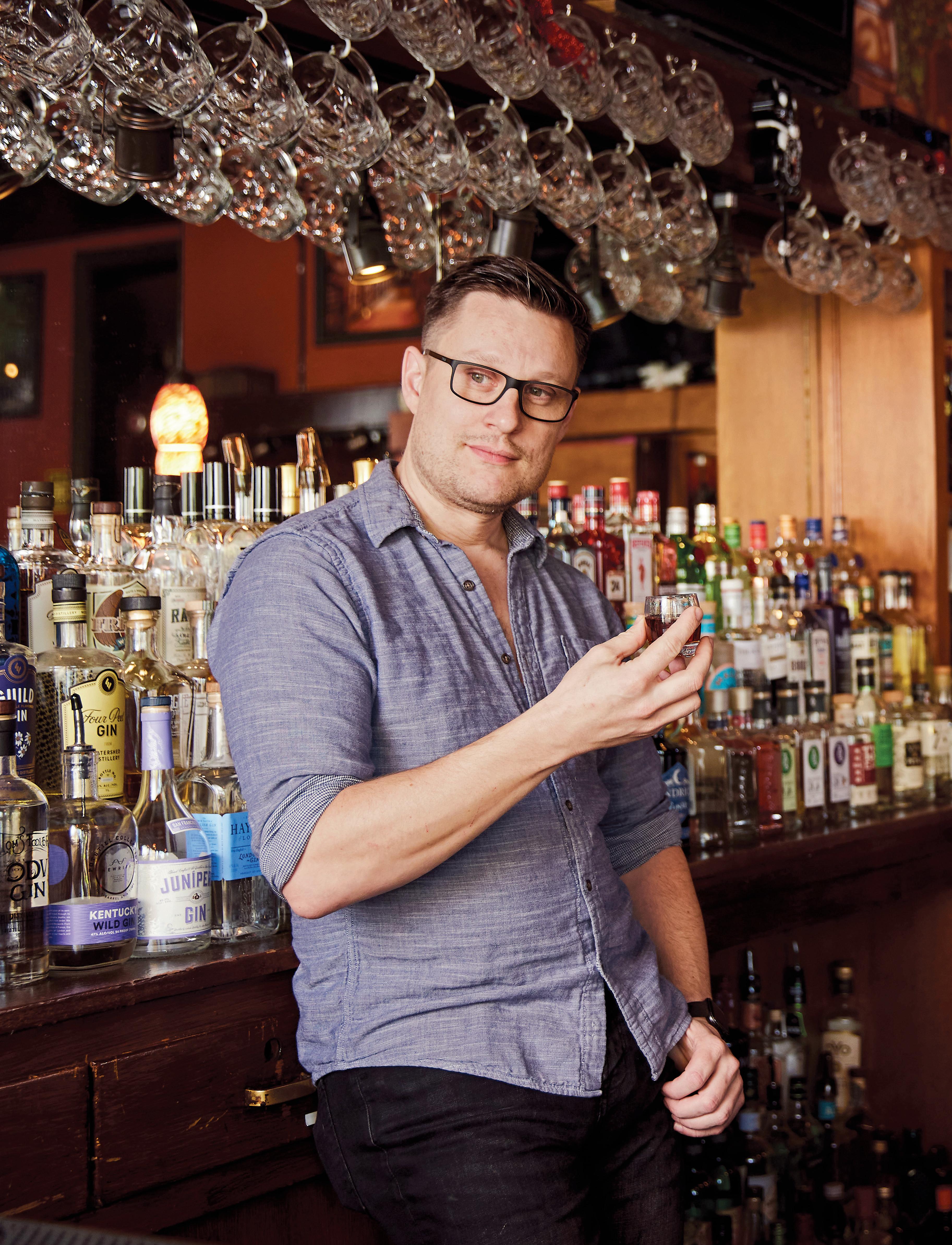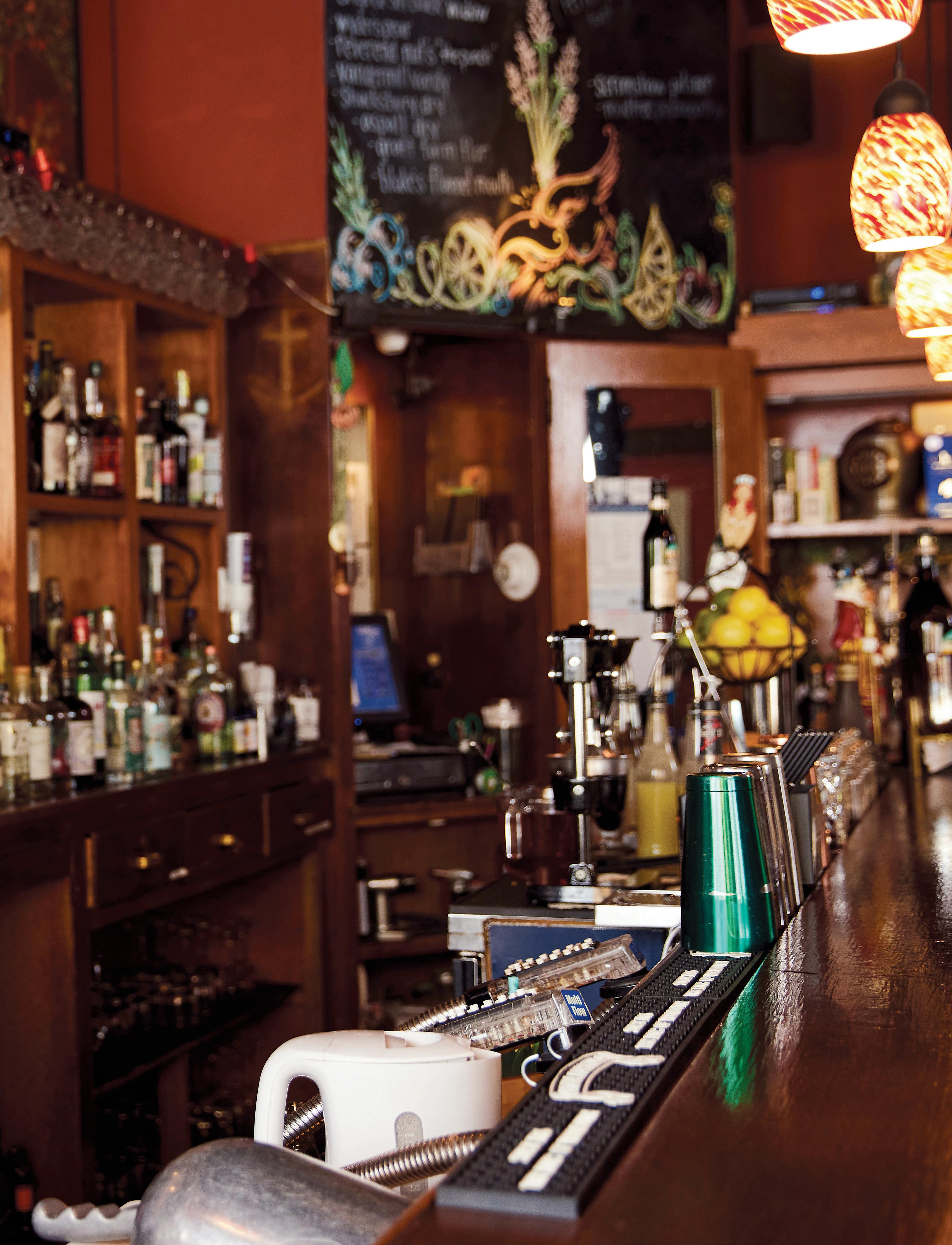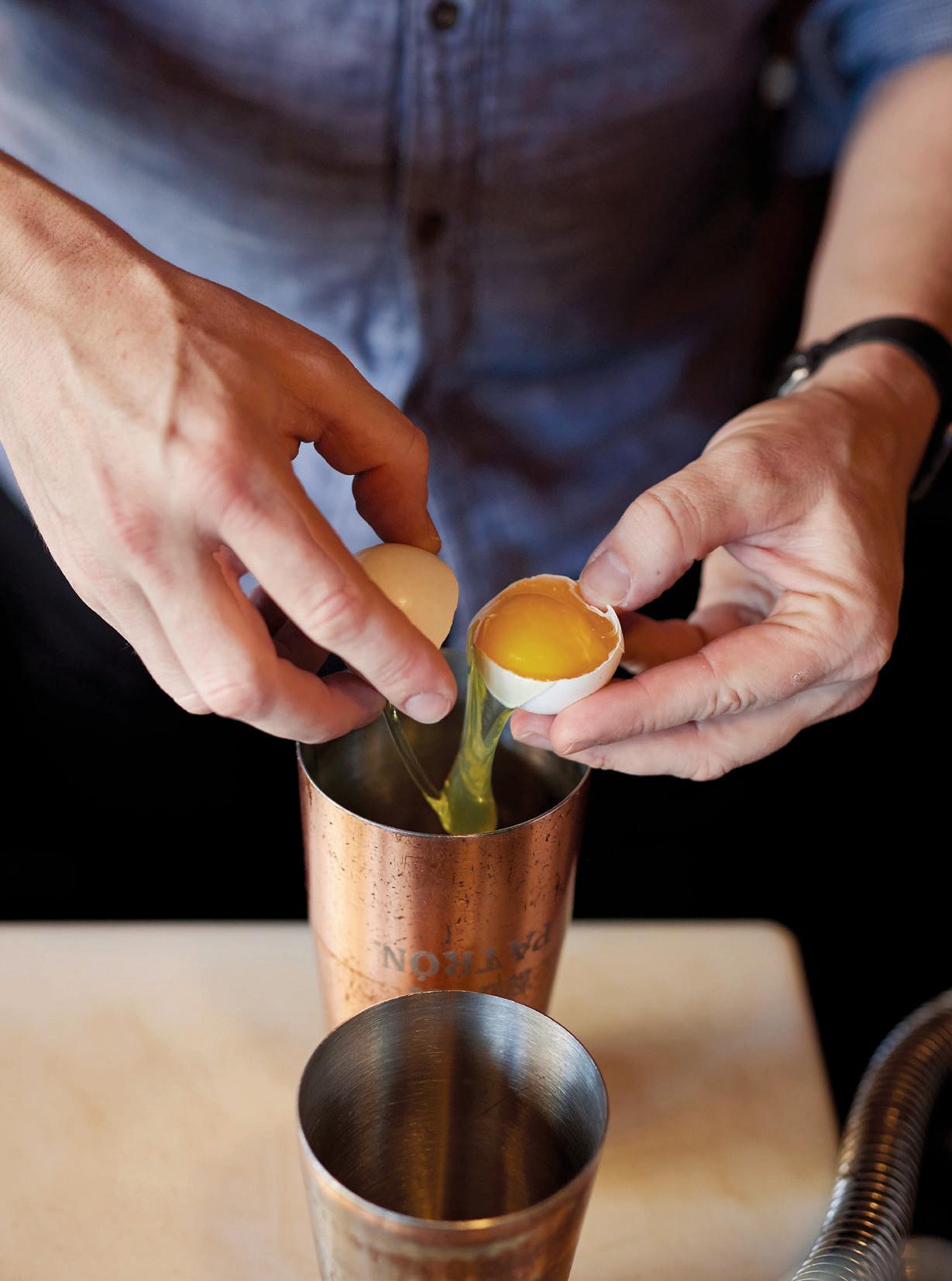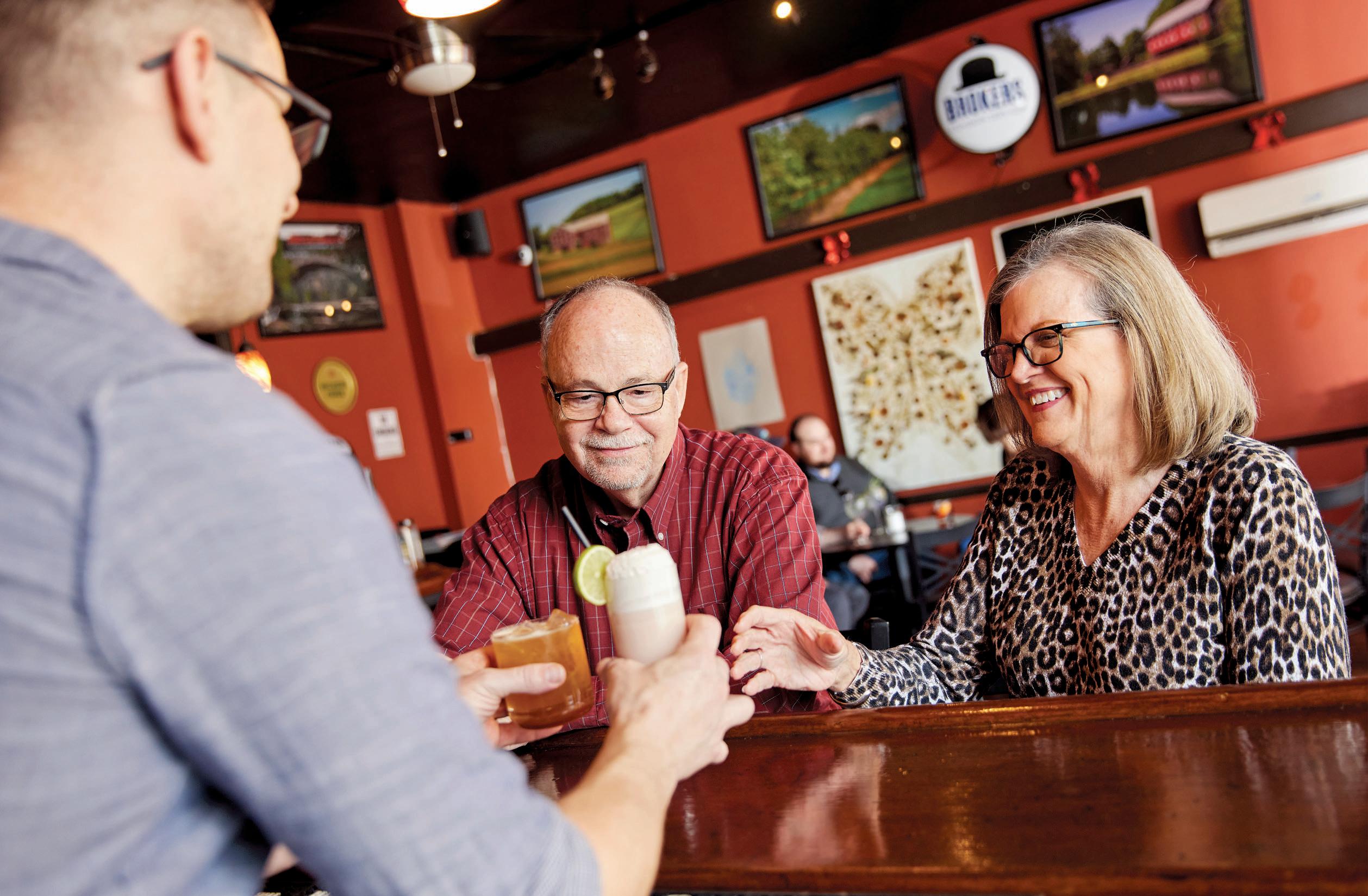
4 minute read
BEHIND THE BAR
Behind the Bar GRIFFIN

CIDER HOUSE GIN BAR & STORY BY JASON BRILL PHOTOGRAPHY BY KEVIN KOPANSKI

For a sloe gin fizz, Read recommends getting the egg white exposed first. After two separate shakes, Read double strains the concoction.




verybody might know your name at the Cheers bar, but the United Kingdom’s pubs are the originals when it comes to making you feel like family, says native Brit Richard Read. That same public house atmosphere is what he wanted for his Griffin Cider House & Gin Bar in Lakewood, a nearwest suburb of Cleveland. A medicalE laboratory scientist by day, Read opened Griffin Cider House in 2015 as a way to showcase the hard ciders he was making at the time. “It’s a place where anybody can go,” he said, “with the classic pub landlord and landlady rules being applied, whereby you’re coming into a person’s house — and therefore you’re treated as a guest, not some kind of cash machine. That’s the heart and soul of the bar.” Sitting at the warm, cozy, and homey bar, it’s hard not to catch all those feels. Bartenders here, including Read, are a talkative bunch, especially if you have questions about gin, cocktails, or cider. Read grew up in a big hard cider area in England. When he came to the U.S. to work for the Cleveland Clinic, he was amazed by how good apples here were and was inspired to make cider.
But between the bar and his day job, he just couldn’t dedicate enough time to cider making. Gin was always supposed to be at least a part of the bar because it’s very popular in England.
Stepping back from cider gave him the chance to focus even more on gin — another drink with multiple flavor profiles. “No one gin is the same as the next,” Read said. “Gin is only limited by the number and amount of botanicals that you add in.
It’s pretty much limitless on how you can present a gin. When you use gin in different cocktails, you’ve got a lot you can work with — it’s really quite incredible.” While the bar still carries a wide range of ciders (Read stopped making his own), it’s continued to focus more on gin. It boasts a collection of around 130, including varieties such as Tanqueray
Rangpur, Highclear Castle Gin, and Watershed Distillery’s
Bourbon Barrel Four-Peel Gin. The gin cocktails range from the simple gin and tonic (Read’s preferred gin cocktail), to a more involved drink such as a sloe gin fizz. In fact, watching Read make the latter, which is made with navy strength gin, sloe gin, egg white, cream, soda water and lime juice, is akin to watching a scientist at work. “I always start with the egg,” he said. “I’m all about exposing things like egg to alcohol as quick as possible just to sort of get it going.” He adds the stronger gin to the egg first, followed by freshly squeezed lime juice and cream, and then tops it off with a sloe gin. He then does two shakes. First, he shakes the concoction with no ice, then adds ice and shakes again. Then he pours a small amount of soda water into a Collins glass, pours the mixture into the glass through two strainers, then tops it off with a little more soda and a lime wheel. “The soda lifts it up and you get this nice, creamy head,” Read said. Each cocktail made here goes through the same TLC, and Read recently introduced a new way to expose patrons to different, higher-end gins than they’re used to. While each cocktail is made with whichever standard gin goes best with its flavor profile, several concoctions have upgrade options, such as the Pisces, which is made with Tanqueray Rangpur gin, Blue Curacao, lemon juice, agave syrup, a Swedish Fish, and London Essence Bitter
Orange & Elderflower tonic. The recommended upgrade for this fish-bowl-like drink is Tanqueray No. 10. The upgrade feature is the perfect example of Read merging his
British pub hospitality with his passion for spirits.

Give a gin and tonic a twist by picking from around 130 different types of gin.
Visitors are treated as guests.
Cocktails range from a simple gin and tonic to more involved variations.




